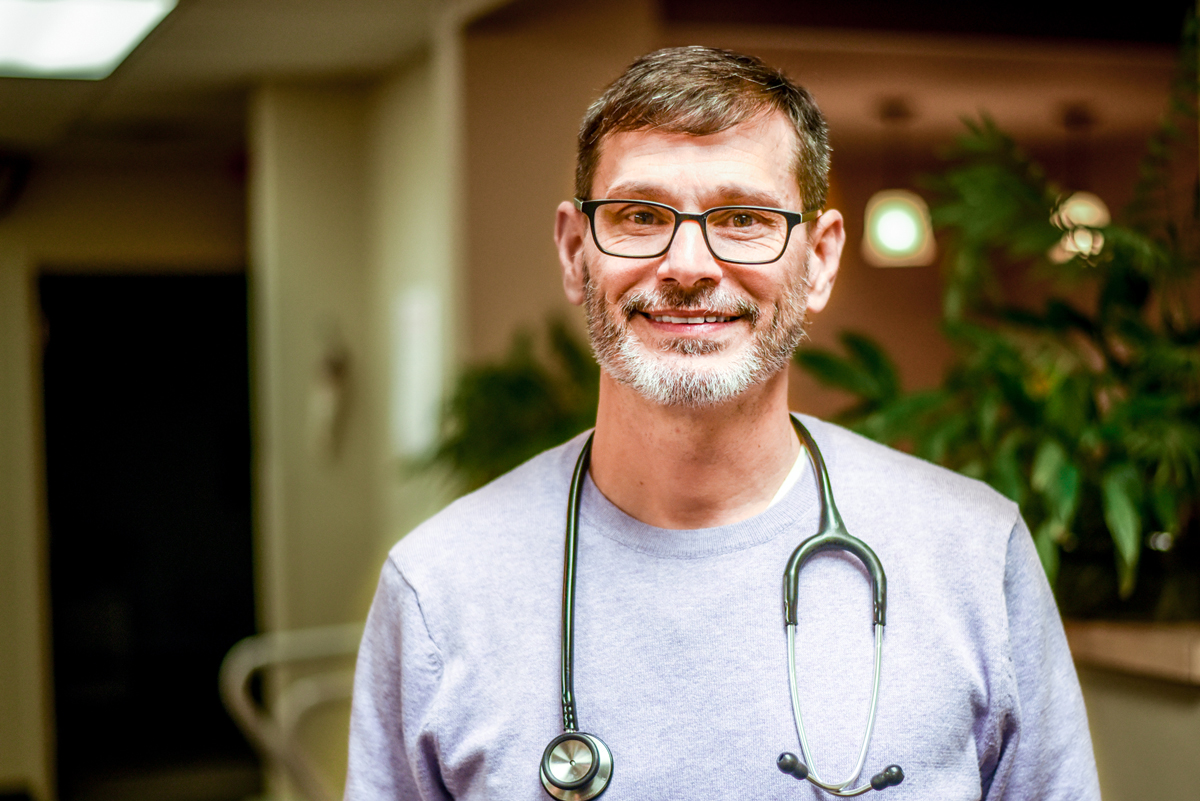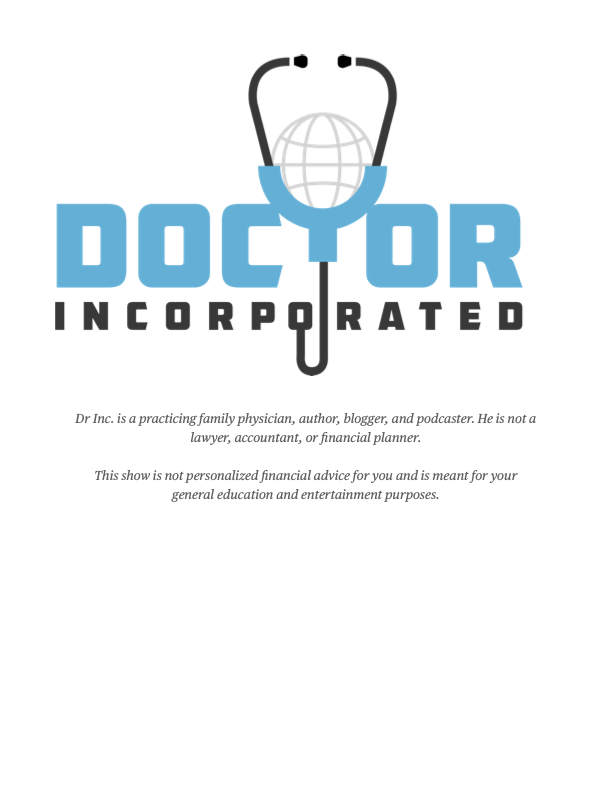
As a family physician, I am a shepherd by nature. I see my family, patients, faith community, and my rural county through the eyes of someone who is seeking to look out for their good. This desire to do good is not limited to my clinic hours, but rather holistically involves both my “on” and “off” times. As a rural doc, it’s nearly impossible to separate the two anyway, it’s just how it rolls.
In my clinic of 3 doctors and 2 NPs, we have about 25 staff members that all work together to deliver care to our patients. We aren’t the only show in town but do our best to care for over 7000 patients.
Our day-to-day operations of health care workers have dramatically changed during this pandemic, just like it has all over the country for primary care medical clinics. For us, this has included
1. Separating the sick and the well
I have converted my medical office building to a community FURI (fever and upper respiratory illness) clinic. My free standing building works well for this since it is over a mile from the hospital. It is manned by all the providers in the community who share in our call group.
2. Non sick patients
Patients who are not sick, but need a face to face visit such as my OB patients, small children requiring vaccines, and other acute medical conditions are being seen at a separate medical office 2 days/week.
3. Tele-Visits
We are transitioning to as many Tele-Medicine visits as possible, allowing patients to shelter in place, but still receive medical attention through the judicious use of technology.
As a shepherd, I feel good about this process for my patients. Admittedly, it’s imperfect, but it at least seeks to safely address medical needs, and thoughtfully reduce COVID-19 transmission to others through co-mingling. Overall we are seeking to an error on the side of keeping patients home and sheltering in place.
But as a shepherd, I fully understand how this process does expose myself and our staff to COVID-19. Even though we are taking measures to limit contact with patients, our clinical staff are still interacting with them. Using proper PPE and taking every precaution possible, we all seek to evade this invisible foe. But we also realize it is possible that we could unknowingly acquire the virus. Most healthcare workers over-ride this fear with a deep sense of purpose in caring for patients. This isn’t just a physician trait but is common to many in healthcare. However, I do happen to believe that physicians are more hard-wired in this manner.
Mostly, we have been able to socially distance non-clinical staff either with remote work or using the 6-foot rule, along with proper surface contact measures. Again, recognizing it’s an imperfect process.
As a shepherd of this healthcare team, I am seeking to do all that I can to balance providing patient care and providing meaningful work (and income) to our staff all while balancing my need to protect both parties from this menacing virus. There is a tension to manage with both provision and protection.
But this brings me to our home. For millions of healthcare workers, the home provides a welcome safe harbor from the pressures and demands of medicine. It is where we are loved not because of what we do, rather we are loved for who we are.
But now, we all worry about our homes and the lives under our roof. Because of our healthcare calling, our homes are now how risk for an uninvited guest, COVID-19.
Healthcare workers are used to worrying about their patients and coming home to relax with those under their roof. The emotional separation from the clinic provides rest for our souls. Although we provide care and concern about those in our households, it’s not as pressing or demanding as our clinic. Ironically, like many physician families, mine would say that I constantly minimize any health concerns they have. While this is true, it’s based on the good science that our bodies are mostly capable of healing themselves!
But this virus is different than anything we have encountered. All of us as healthcare workers are mindful of the risk we are to our loved ones in our homes. Being at higher risk due to our personal exposure and being mindful of the 6 plus day incubation period of this virus, the reality is our asymptomatic biological footprint in our home IS A MASSIVE RISK FOR OUR FAMILIES.
I have read a few articles and blogs about what healthcare workers are doing to reduce their biological footprint at home but really can’t find any true CDC, or authoritative guidelines for us on this.
 Get A Copy Now!
Get A Copy Now!
https://www.doctorincorporatedthebook.com/
So with the protection of our loved ones in mind, here is a suggested, non-exhaustive list of what healthcare workers could consider:
In Your Clinical World
1. Patient care
Follow every CDC recommended guideline for protective measures when interacting with patients, including the use of PPE when clinically appropriate
2. Cleaning clinical space
Using proper cleaning solutions, cleanse your hands, medical equipment, and work-space hard surfaces between patient interactions. Make sure to include door and cabinet knobs.
3. Separate sick from well
Seek to separate the well and sick from clinical areas, including using separate entry-exits for the sick that minimize their contact with physical space, patients, and staff. We actually have patients wait in their car until we can meet them at our FURI (fever upper respiratory illness) clinic entrance and escort them to a designated room totally separate from all staff and clinical flow in the building.
4. Hospital work
If you round at the hospital as I do, all of the same measures need applied upon entering, during, and after attending at the hospital.
5. Heading home
Having taken all of that into consideration, now you head home. Assuming most of you commute in a private car, the following 12 steps are meant to provide you with some guidance at home.
12 Steps to Protect Your Home
1. Clean your vehicle
As you arrive to your home, you should use a proper solvent to clean down the hard surfaces in your vehicle including the door handle (wherever you touch), and then use the same solvent on your hands and any doorknob to your home that you come in contact with.
2. Disrobe your outer work clothes
Do this before entering the home, or immediately after entering, and throw them in the washer. Although there is evidence that the virus doesn’t live on clothes very long, safety is best.
3 Shower first
Minimize touching things, and head to the shower for a full 10 minute cleanse.
4. Biological Footprint
Retrace any steps that could have left your biological footprint and cleanse them.
5. Socially distance in your home
Attempt to socially distance yourself from household members using the 6 foot rule.
6. Shopping
If you go to the grocery store, retail stores, etc… you must be extra vigilant to viral exposure at these locations. Consideration of repeating steps 1-4 should be made if you do venture outside of the home for items. I suggest using grocery, meal, and retail delivery services if at all possible to minimize exposure in stores. Be mindful that the virus can live for up to 24 hours on cardboard.
7. Meals
Food is challenging. If the healthcare worker prepares meals, I would suggest a face covering-mask and medical gloves during this element, although it is not absolutely necessary. Pre-cooked and prepped meals are ideal because they reduce handling. If your dinner table allows for it, you can gather to eat together with a 6 foot gap. The logistics of this for families needs individualized. Don’t forget to wipe down whatever was part of your biological foot print including the refrigerator, stove, dishwasher, cabinet knobs, etc…
8. Sleeping together
If you have a partner, choosing to sleep in the same bed is a question to be considered, depending on space options in your home. Many are choosing separate spaces for this now.
9. Sexual activity
Sex is not necessarily forbidden, but kissing and face to face intimacy should not occur. There is no evidence that the virus is carried in semen or vaginal fluid. Shower thoroughly before and after sex. Some might choose to abstain due to the potential risks, but this is a conversation to have.
10. Radical Separation
Strict separation in a quarantine like fashion before you become ill is something to consider, depending on how your dwelling is arranged. Separation within a home, or outside of a home is radical, but it’s the ultimate form of protecting for your loved ones. In our home, we agreed that I would strictly separate after I had my first personal contact with a confirmed COVID-19 patient. That sentinel event happened this week, so I am now moved into our guest house for the next several months, until the pandemic slows down. I realize that many don’t have guests houses, but a basement living space, garage, or separated living space could be organized to protect your loved ones. Whether you can do something like this, depends on your situation. I know in our area one of the residence type resorts was offering accommodations for healthcare workers. There may be options like this in your community. When to do this, is just a matter of personal preference.
11. Self governance of symptoms
Monitoring yourself is important as well. Most of us want to keep working and helping others, but if you sense that you are becoming ill, please choose to get tested and stay home in self-quarantine. Our clinic is testing the temperature of every employee twice a day, and anything at 100 degrees or over is being flagged for testing and being sent home for quarantine. This comes back to the importance of protecting your patients and colleagues from your own transmission of this virus as well.
12. Should you contract COVID-19
Please absolutely quarantine yourself until you are cleared medically to return to work. With antibodies, you could become an important asset later in the battle. I’ll leave it up to you and your healthcare provider if you start zithromax and hydroxychloroquine. I think I would
Thanks for all you are doing in healthcare to take care of patients in your community. One by one you are making a difference! But please be mindful of your and your family’s health and well-being.

Dr. Inc.








0 Comments